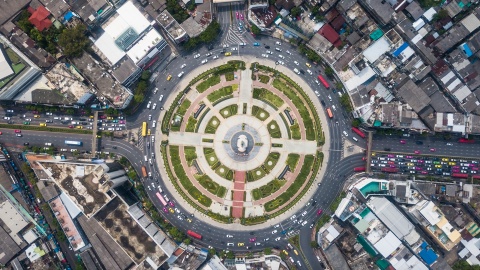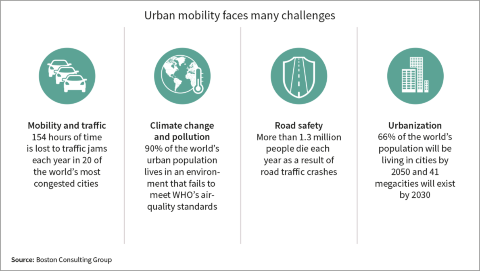
Regional Stories
Mobility stories
Looking at global carbon emissions, road traffic and the supporting infrastructure is emerging as one of the fastest growing source. It already accounts for 24% of global output today and will rank number 3 by 2030 (IEA). Nearly 75% of global transport emissions come from road vehicles, with almost half attributed to passenger cars and buses.
USA
Extending range with the help of semiconductors
Electro mobility marathon in USA demonstrates excellent range of VW ID.4
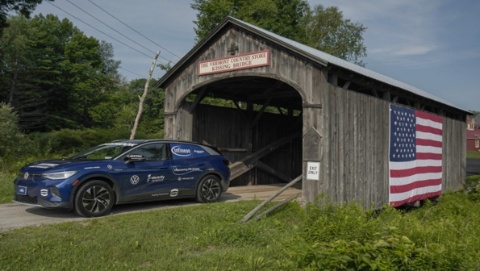
How far will it go? Range anxiety deters many buyers considering an electric vehicle. To demonstrate the range of their electric cars, Volkswagen America organized the longest ever marathon to be held in a single country. Spanning 65 days, about 640 charging stations, and more than 20,000 kilometers across the US, the marathon even secured a Guinness World Records™ title. The VW model ID.4 used for the marathon is powered by 50 semiconductors from Infineon, including power semiconductors, microcontrollers, and driver ICs.
Germany
Semiconductor solutions for quieter trams
Noise reduction for trams increase quality of life in residential areas, also improving mobility.
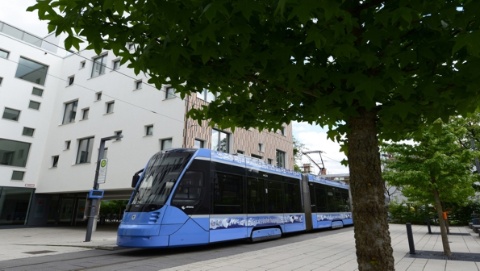
Copyright: Stadtwerke München (SWM)/Münchner Verkehrsgesellschaft (MVG)
Road traffic is loud, putting people living and working in cities under enormous stress. To counter noise pollution, public transport operators are searching for ways to reduce the noise levels of their vehicles. One innovative solution involves using silicon carbide (SiC) technology in Infineon’s power module XHP 2. In a field test, an "Avenio" tramway equipped with this platform and technology transported passengers some 65,000 kilometers around Munich over the space of a year. The results speak for themselves: much lower noise levels and 10% less energy consumed.
Austria
Decarbonizing public transport with hydrogen buses
Green hydrogen has the potential to decarbonize public transport. To leverage this opportunity and deliver sustainable mobility choices to its citizens, Austria’s biggest bus operator, ÖBB Postbus, will soon be adding up to 40 hydrogen buses to its Carinthia fleet. Infineon Austria will be supplying the hydrogen. Infineon produces and uses green hydrogen at its Villach site, capturing the off-gas, purifying it and recycling it to the public buses.
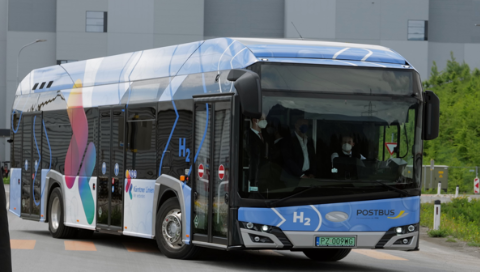
The 12-meter hydrogen-powered buses will be operated by ÖBB Postbus in Villach. The new buses refuel with recycled hydrogen that was produced locally and sustainably, making it green.
Here’s how it works: After the hydrogen has been used in semiconductor fabrication at Villach, it is purified using an innovative process and supplied to the public buses for reuse. Thanks to this technology, the new buses will be able to cover about 400 km with just one tank of fuel, carry up to 74 people and reaching a maximum speed of 80 km/h.
Infineon’s first hydrogen plant: Solution for sustainable closed-loop recycling
The hydrogen, used as a carrier and process gas in semiconductor production, will be generated directly at Infineon’s site using renewable energy sources.
This on-site supply will replace fossil-based liquid hydrogen deliveries previously trucked in from Germany. In a first step, the new plant will produce 500 kg of hydrogen a day. Once the generation facility has been fully expanded, this will increase to 800 kg.
The project will include the first hydrogen fueling station in the Carinthia region and the addition of hydrogen-fueled vehicles to existing bus fleets. The fueling station will be designed for the refueling of heavy-duty vehicles such as buses and trucks and is scheduled to open in 2024.
Facts and figures
- 337 kg of recycled hydrogen will be available every day
- Around 4,200 bus kilometers can be driven every day
- Up to 17 buses in the Villach area will be climate neutral
- The H2 bus service corresponds to around 1.4 million climate-neutral kilometers per year
India
Electrifying urban transport
From 2023 onwards, electric-only rickshaws and two-wheelers will contribute to reduction of air and noise pollution in New Delhi.
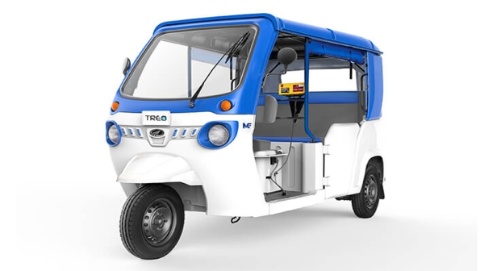
Source: Mahindra Electric
Road traffic in New Delhi is stop-and-go at best. Massive air pollution and traffic congestion complicate people’s lives and endanger their health. Now, India has made a groundbreaking decision: Very soon, only electrically powered rickshaws and two-wheelers will be allowed on the streets. Drivers will be able to charge these popular and durable vehicles within five minutes to run for over 50 kilometers. Infineon is an enabler of this significant shift in urban traffic, providing the power supply semiconductors used in rickshaws and e-motorcycles.
Singapore
Autonomous people movers to close public transport gaps
To convince people in Singapore that they don't need a car in the big city, researchers are working on a traffic solution offering a seamless mobility experience.
Even in urban areas, many people think they cannot do without their own vehicle. As part of Singapore's Land Transport Master Plan, researchers are working to close the gaps and make public transport as convenient as possible. Autonomous on-demand services such as "people movers" play a key role in this concept. These movers transport people from their home to the nearest subway using priority lanes and interactive traffic lights. It goes without saying that mobility services such as these would not be possible without semiconductor solutions from Infineon.
China
Semiconductors from Infineon powering the success of the HiPhi X SUV in China
China promotes electric mobility more strongly than just about any other country in the world. Numbers of electric cars on the road continue to rise as buyers are incentivized with attractive subsidies.
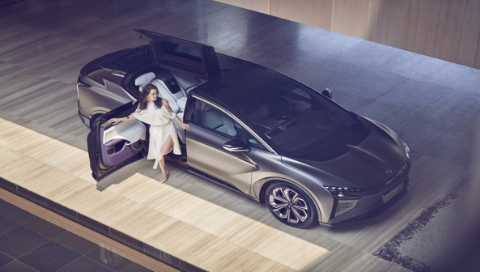
As subsidies started to wave two years ago, the Chinese market for electric vehicles gradually changed to be more consumer-oriented, driven by a younger generation and more sophisticated consumers craving for personalization.
In answer to this, new OEM breeds have entered the market aggressively, tightening the bond between digitization and decarbonization like never before. The interior design must offer sufficient comfort, the cockpit more infotainment, and a good example born out of these trends is the fully-electrified luxury crossover SUV HiPhi-X from Human Horizons.
The HiPhi-X is a premium Smart EV launched in China on 8 May 2021. Designed according to the principle that "a car is no longer just a car", it offers many smart features like Smart Exit/Entry System, Programmable Matrix LED Lighting and E-Proportion Design that combine the aesthetic appeal and functionalities of both supercars and SUVs. Drivers are thrilled by its unique design, more, inspired to innovate by its constantly involving features. HiPhi-X has been the top-selling luxury EV above 500,000 RMB in its initial year of sales.
The integrated Infineon components include 20+ AURIX™ microcontroller, IGBTs in the traction inverter, Driver ICs and Power MOSFET. The 20+ AURIX™ microcontrollers have been built into the following controllers and systems: Exterior lighting incl. lighting domain controller, body domain control module, autonomous driving control module, position-box, electronic drive system, battery management system, central gateway module, integrated control unit of on-board charger, DC-DC converter and power distribution unit.
Japan
Public transport ticketing
Rail and local transit services are the main way people get around in Japan. The Japanese system is advanced compared with other countries, with high-speed trains linking major cities, commuter trains and buses connecting urban areas, and sophisticated systems managing public transit within cities.
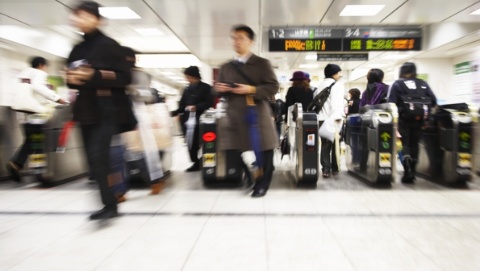
In order to manage huge passenger numbers and hundreds of public transport operators across the country, Japan introduced rechargeable contactless cards (e.g. Suica, Pasmo) early in 2000, and has since been gradually evolving the concept towards a “one card fits all” scheme. These cards enable cashless and ticketless travel on trains and buses within Japan, also supporting micropayments in restaurants, supermarkets, and shops. Reaching beyond these contactless cards, this payment and ticketing functionality is now being extended to smartphones and smartwatches. These form factors are proving equally popular as they are even more convenient. This marks an essential step towards Mobility as a Service (MaaS) enablement.
Crowd control during peak times in busy transportation terminals remains a significant challenge for transport operators in Japan. On average, about 60 people pass a transport gate per minute.
So how can operators and authorities maximize passenger throughput while providing adequate safety and security? One possibility is providing a "touchless" experience by combining ultra-wideband (UWB) technology with Bluetooth® Low Energy (BLE). This combination takes passenger convenience to the next level.
Passengers equipped with an UWB-capable device can pay with a ticket securely stored on their mobile phone by just walking up to a barrier, which opens automatically as they approach. The ticket would be authenticated in the background (this would be handled by the secure element in the phone) without the user even taking their device out of their bag or pocket.
UWB technology from Infineon is making touchless yet secured travel a reality.
